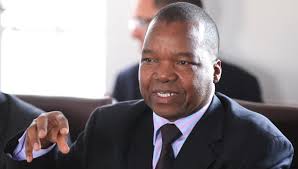By Rudo Saungweme
Reserve Bank of Zimbabwe Governor, Dr John Mangudya has indicated that the rise in inflation in October 2018 was engineered by panic mode which led to the hoarding of assets and food.
Speaking before Parliament’s Public Accounts Committee today chaired by Harare East legislator, Tendai Biti, Governor Mangudya said, “Zimbabweans live in panic mode. The events in October caused panic buying. The panic buying had to put much pressure on the foreign currency which caused the parallel market to go up, thereby leading to inflation.”
Mangudya said that the low productivity had also caused the rise in inflation, adding that inflation in January rose to 57 percent because of a technical aspect.
However, Dr Mangudya said that inflation would go down in September and October this year due to the measures that had been put by the Central Bank which included the temporal removal of an export incentive.
“We introduced the export incentive to promote more exports so that they will defend 1:1 exchange rate. However, the incentive did not work, meaning to say that the inflation became higher than the export incentive.”
The export incentive was introduced in May 2016.
Dr Mangudya said that inflation had to rise again to 57 percent in January this year due to a technical perspective.
Asked why the bond notes no longer have the value of 1:1 with the US dollar as was previously the case when the bond note was introduced, Dr Mangudya said that when the country was dollarized, the economy had no enough foreign currency to match the RTGS deposits.
“We did not have enough forex to match our RTGS deposits when we dollarized the economy on 13 February 2019,” he said.
Dr Mangudya encouraged Zimbabweans to produce more so as to reduce inflation.
However, he promised that come September and October this year, inflation will go down.




